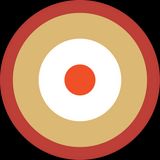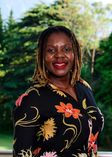
Scholar Stories
A conversation with 2023 Äänit Prize winner Maureen Etuket
Maureen Etuket (Uganda & University of Cape Town, 2021) is a Biomedical Engineer at Pumzi Devices. She is also pursuing her PhD at Stellenbosch University in Industrial Engineering.
As a part winner of the $38 000 Äänit Prize 2023, Maureen shared how her journey has been so far.
What is the name of your company and what does it do?
Pumzi Devices Uganda Limited.
Our team designed the SMART-PVD device, a volumetric drape which measures the amount of blood lost after childbirth. The drape will empower midwives to save the lives of new mothers who lose an excessive amount of blood after childbirth, preventing maternal death.
How did you come up with the innovation?
In the final year of my degree, I spent time in maternity wards at Kawempe National Referral Hospital in Kampala, doing clinical trials with another organisation. That is how I got to understand the challenges in the space.
I discovered that many nurses used visual estimation (using their eyes) to tell if a woman was bleeding excessively after giving birth.
When I asked how they knew if a woman is having Postpartum haemorrhage, they simply said they could tell through experience. I noticed that after giving birth, women would be left on the bed. By the time the nurses and midwives returned, they often had no pulse due to excessive blood loss.
I then posed the problem to the students I was lecturing at Kampala’s Ernest Cook Ultrasound Research and Education Institute on how we could address this issue. That is how we came up with the idea of a SMART PVD device that can measure the amount of blood lost after childbirth.
Why do you think Africa needs this innovation?
Postpartum haemorrhage is not just a problem in Uganda; it is also a concern in other parts of Africa, including South Africa.
Most hospitals in Africa are understaffed. There are generally one or two nurses for every ten beds delivering babies. Immediately after they finish delivering one baby, they move to the next woman in labour. At what point will they be able to recognise that a woman is bleeding excessively?
When you can know how much blood a woman is losing, you are able to deliver the appropriate care on time because there’s planning that goes into it. Sometimes the theatre needs to be ready, sometimes it is about the blood transfusion. The blood bank must be notified, and they need to prepare. Sometimes just the doctor must be notified on time.
Is your device available for demonstration?
We cannot share what it looks like yet. The thing about medical devices is that people want to see it immediately and to have it in hospitals now. But if you look at a ventilator for instance, it takes a long time for it to get into market. Sometimes more than 15 years.
Ours is not a class A medical device like a ventilator, it will be a class B. It is not as high-risk as the ventilator, but the purpose of this device is for real time monitoring of blood loss. So, there is a lot of work behind the scenes to ensure optimum accuracy.
What lessons have you learned since winning the Äänit Prize
The focus from last year to now is three main things.
The first one was the pilot study. This is a lengthy process, but we have made tremendous progress. The funding we received was to carry us through the pilot phase. We were able to do device development. Now we are waiting for the approvals and certifications. Once we get approvals, we will get preliminary data which will position us for market.
Secondly, we have been able to pay the team of six with whom we are working.
Thirdly, we decided to get our house in order and implement proper structures and systems like contracts and legal documents. What I learned through the pitching process is that funders fund the whole team.
What was the first thing that came to your mind when you heard you had won?
The first thing I thought of was the team. I care about the people I work with. The team got the nation of Uganda voting for us. The whole of Africa was behind us, even people from America voted for us. That showed us that we should not take the problem we are solving for granted. We even had women who had PPH during their deliveries voting for us and supporting our pitch.
What did you learn through the process?
Receiving the Äänit funding positioned us for more funding. We received another $55 000 in funding. The progress that we have made has been recognised by the government of Uganda. We were even invited to parliament to speak about the device and the progress we are making. And I received my first salary because of the Äänit funding.
Was the Äänit Prize pitching process difficult for you?
It took me 30 minutes to submit because I was enthusiastic about the problem I wanted to solve. Money comes to people who solve problems.
The day I submitted my proposal, I told my co-director that we were going to win. You need to be confident in the problem you are solving, not the solution.
What innovation has inspired you lately?
There is a team in Uganda that produced an ultrasound phone app that allows you to attach the prop on your phone and do the scan on a pregnant woman. This makes ultrasound scans accessible to people. I like people who solve big problems with simple solutions but enormous impact.
What is next for you?
My interest is now on developing policies, structures and systems that will allow for the uptake of local medical device-innovation to happen in different part of Africa**.**
I want to build innovation capacity with high school kids as well.







